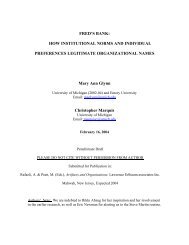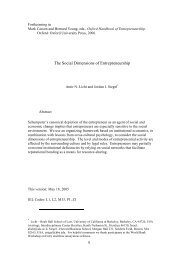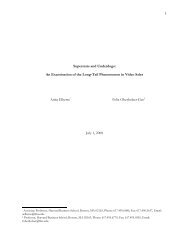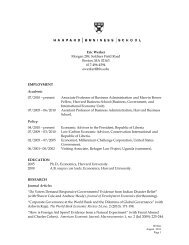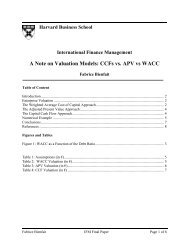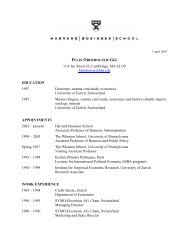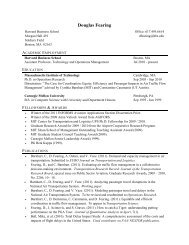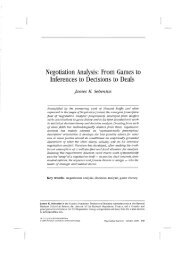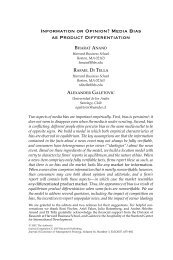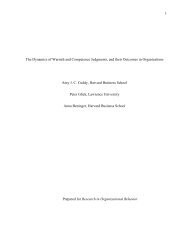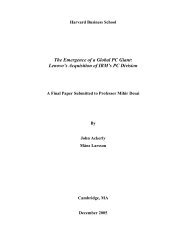The Demand for Tax Haven Operations - Harvard Business School
The Demand for Tax Haven Operations - Harvard Business School
The Demand for Tax Haven Operations - Harvard Business School
You also want an ePaper? Increase the reach of your titles
YUMPU automatically turns print PDFs into web optimized ePapers that Google loves.
4.2. <strong>Tax</strong> havens and tax payments<br />
Table 5 presents regressions that further explore the use of tax haven affiliates to relocate<br />
taxable income with particular attention to the role of regional tax havens. <strong>The</strong> dependent<br />
variable in the regressions reported in Table 5 is the ratio of tax payments to sales <strong>for</strong> affiliates<br />
located outside of tax haven countries. <strong>The</strong> regressions in Table 5 investigate if this ratio is<br />
distinctive <strong>for</strong> affiliates of firms that make use of tax havens. If certain firms can relocate<br />
income to low or zero tax locations, then this ability will reduce observed returns and observed<br />
tax payments in high tax locations. 9<br />
<strong>The</strong> regressions reported in Table 5 include measures of affiliate leverage, defined as the<br />
ratio of total liabilities to total assets, since the tax deductibility of interest payments is likely to<br />
induce a negative correlation between tax payments and greater leverage in a mechanistic way.<br />
<strong>The</strong> regressions also include dummy variables <strong>for</strong> parent companies, affiliate industries, and<br />
years, and the standard errors are clustered at the affiliate level. Country tax rates are positively<br />
associated with tax payments, as was expected, though parent ownership of any tax haven<br />
affiliate has only small and insignificant negative effects on tax payments in the regressions<br />
reported in columns one and two. Ownership of regional tax haven affiliates, however, is<br />
associated with significantly reduced tax payments. <strong>The</strong> –0.0207 coefficient in column three<br />
indicates that affiliates whose parent companies have tax haven affiliates in the same region pay<br />
2.1 percent lower taxes as a fraction of sales. 10<br />
<strong>The</strong> regression reported in column four of Table 5 distinguishes the effects of tax haven<br />
affiliates in large and small countries by adding a dummy variable <strong>for</strong> firms with regional tax<br />
havens located in Dots but not Big 7 countries. <strong>The</strong> positive and significant 0.0073 coefficient<br />
on this dummy variable indicates that ownership of regional affiliates in Dots but not Big 7<br />
countries is associated with a smaller tax reduction than is broader ownership of tax haven<br />
9 <strong>The</strong>re is no single dependent variable that is ideal from the standpoint of measuring tax-motivated income<br />
reallocation, though the use of alternative dependent variables, such as the ratio of after-tax income to equity, or the<br />
ratio of tax payments to equity, produces results very similar to those reported in Table 5.<br />
10 Desai, Foley and Hines (2004b) compare the effects of having a haven affiliate with tax rate differences in an<br />
ef<strong>for</strong>t to quantify the tax-reducing effects of avoidance available using haven affiliates. This comparison is suspect,<br />
given that any measurement error in calculating tax rates may create a downward bias in the estimated tax rate<br />
effect. This downward bias in estimated tax rate effects in turn inflates the implied effect of owning a haven.<br />
11



